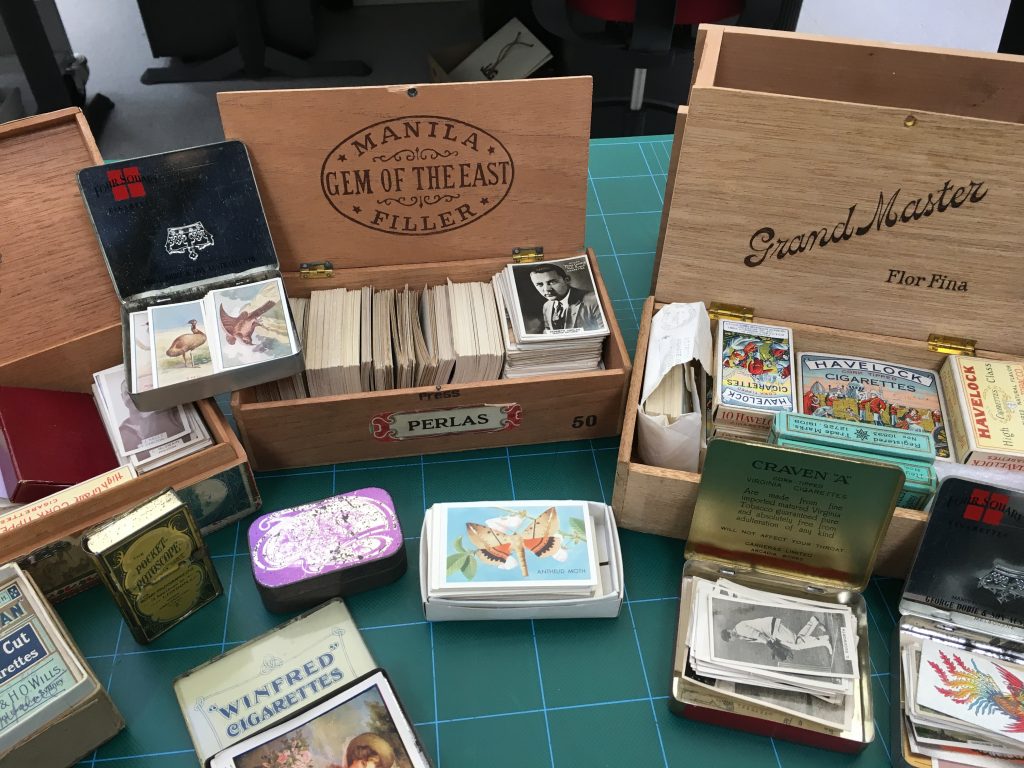
Whether you prefer footy cards or Pokémon, avid collectors and those with children will no doubt be familiar with the infinite series of collectible cards produced each year, and the challenges associated with keeping them organised!
Collectible cards as we know them today have a very long tradition, dating back to the mid-late nineteenth century with the production of cigarette cards. While it could be argued that today’s glossy cards lack the illustrated charm of earlier examples, one notable upside to these modern varieties is they won’t harm your health!
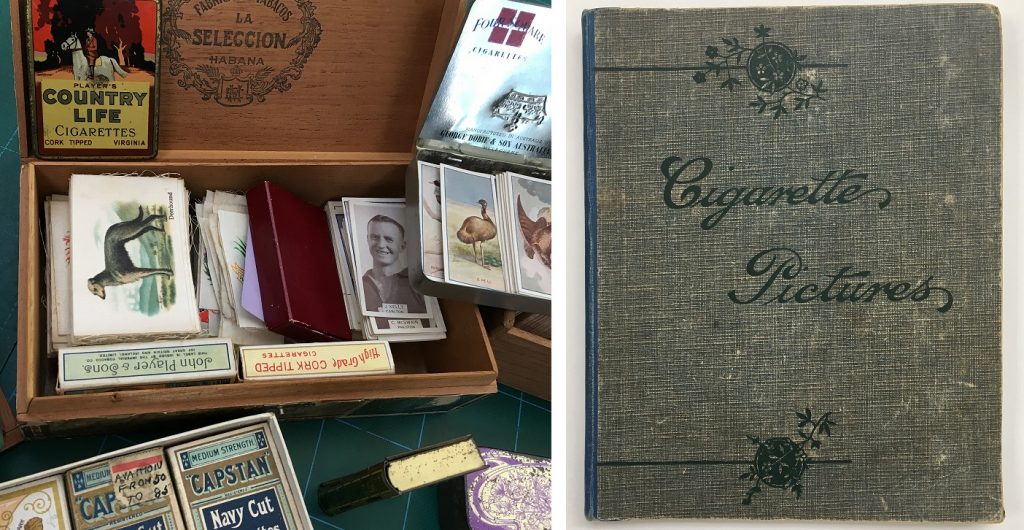
History of cigarette cards
Cigarette cards first emerged in the USA in the mid-late nineteenth century with the introduction of pre-rolled cigarettes to the market. Small pieces of card, known as ‘stiffeners’, were inserted to protect the contents of soft cigarette packets and were soon recognised for their marketing potential. These cards were initially printed with tobacco company advertisements. However, before too long, an enterprising entrepreneur had the idea of issuing limited illustrated series to reward loyal customers and inspire a community of collectors. The UK tobacco companies promptly caught on and W.D. and H.O. Wills soon became the most prolific manufacturer of cigarette cards worldwide.
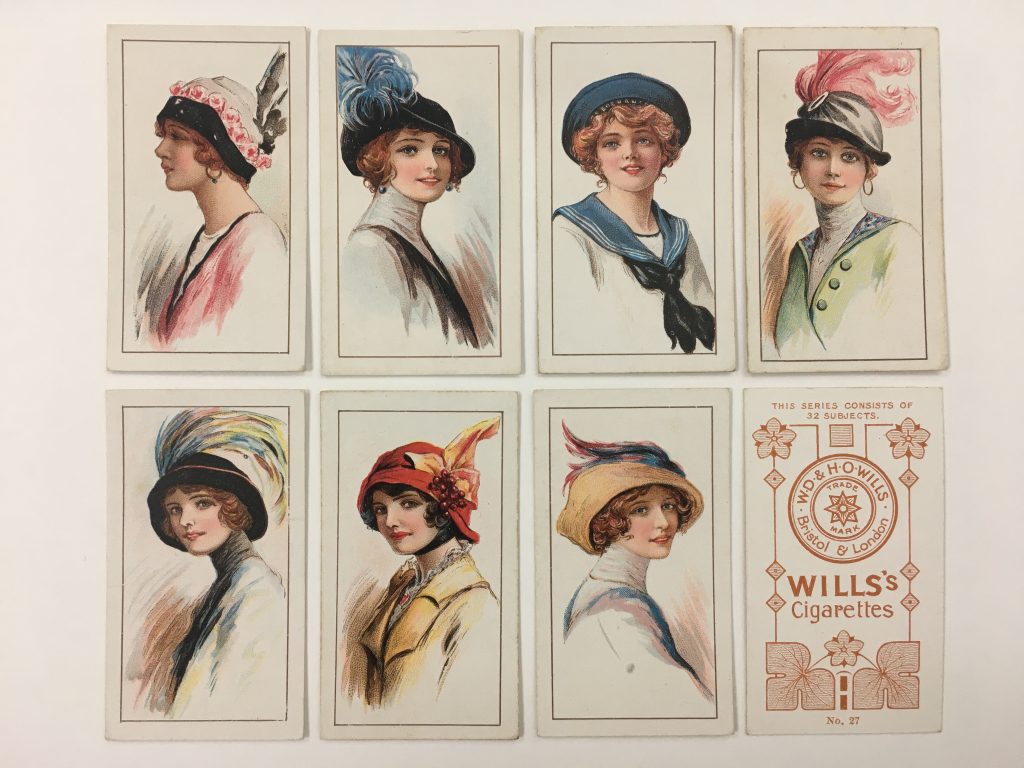
Cigarette cards sported a range a subjects including natural history, war, cricket, football, famous paintings and actresses, wildflowers, animals, exotic places and historical events. By the early 1900s, the backs of cards were commonly printed with explanatory text relating to the series or the subject of the individual card. A complete set, while ordinarily comprising 25 or 50 cards, could include up to 100 cards, and with select cards in limited circulation, repeat custom was encouraged.

From relatively modest beginnings, the production of cigarette cards soon became a booming industry, employing many artists and writers to keep up with demand for quality content.
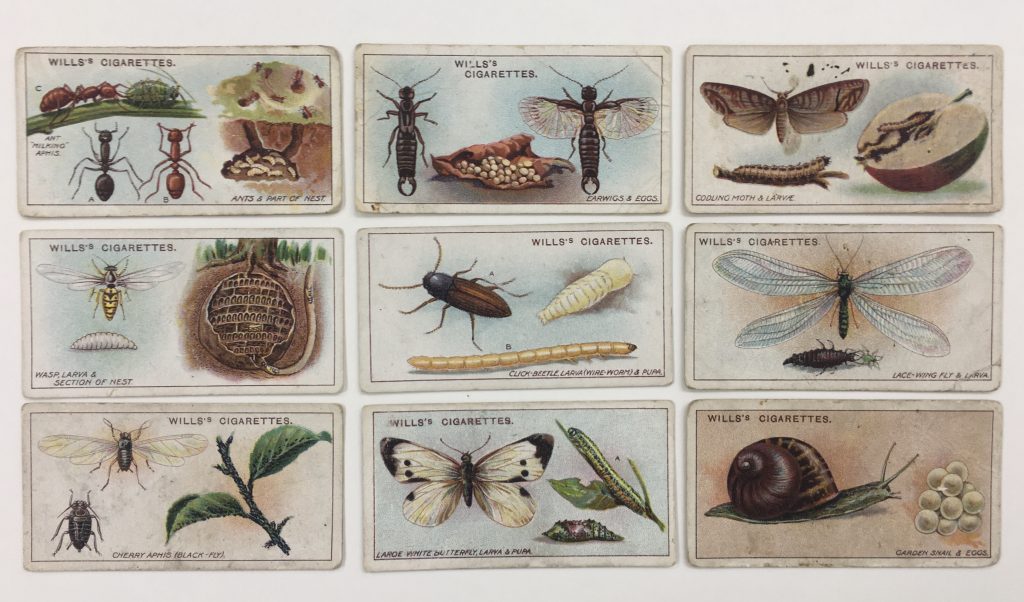
Australia was a lucrative market, particularly for the English companies, however Melbourne-based Snider & Abrahams were also quite successful. Producing their first series in 1904, Snider & Abrahams incorporated distinctly local themes, such as football and cricket. Military, animal and bird sets were also popular, while the series, ‘Views of Victoria in 1857’ by S.T. Gill fulfilled the collecting desires of those with a leaning towards history and the arts.
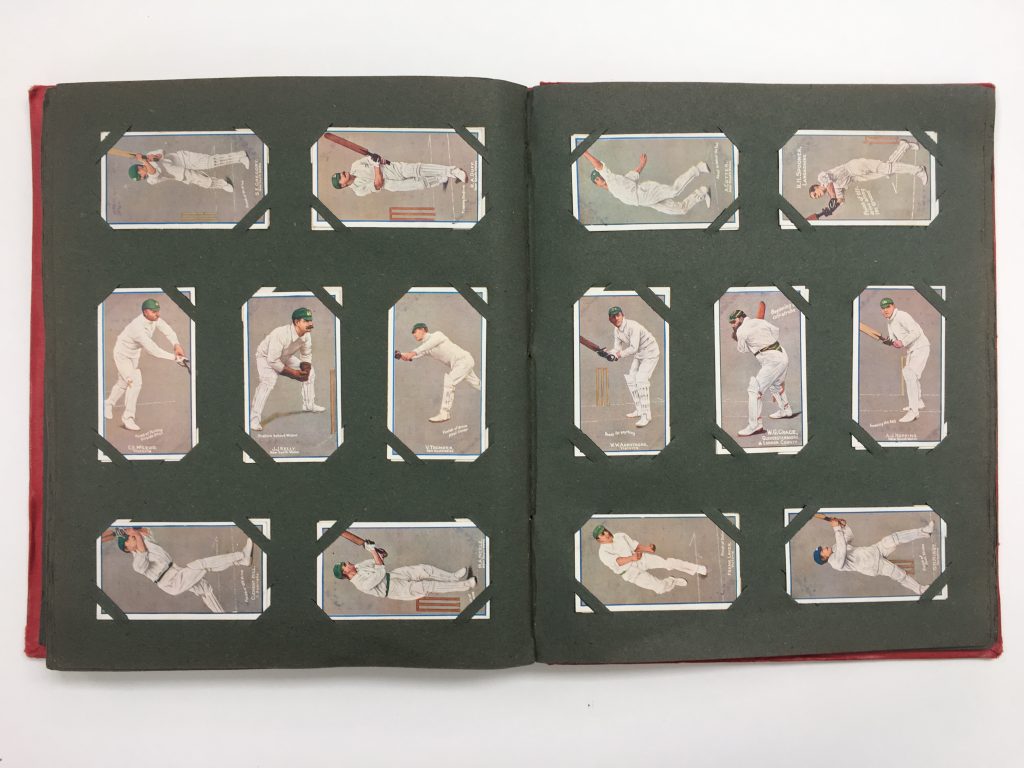
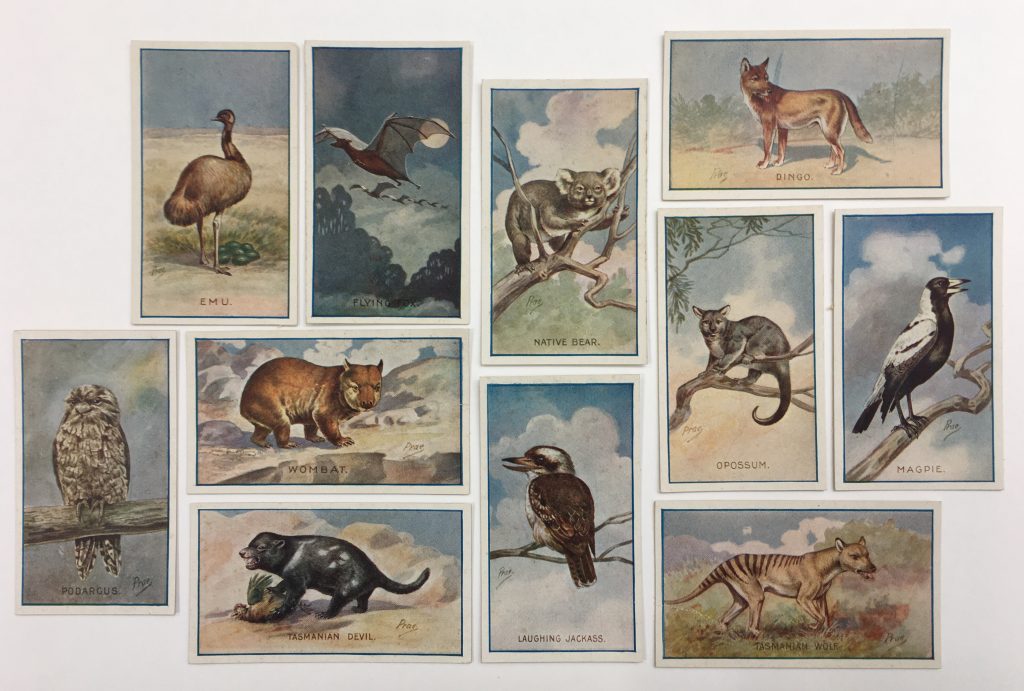
The 1930s brought a period of notable richness in the printing quality, with a brightness and detail perhaps lacking in earlier cards. During this time, some manufacturers were also issuing special albums to house specific sets, but this was not to last. Restrictions on the use of paper during the Second World War significantly halted production of cigarette cards worldwide and the industry never fully recovered.
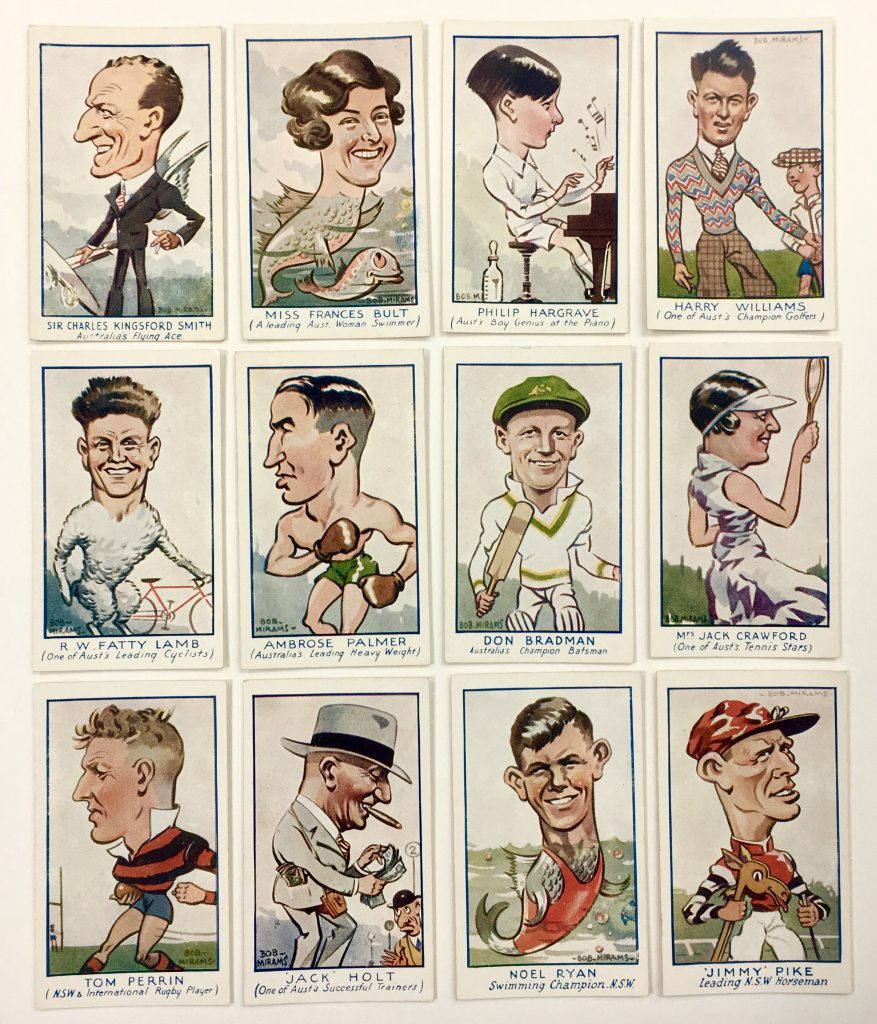
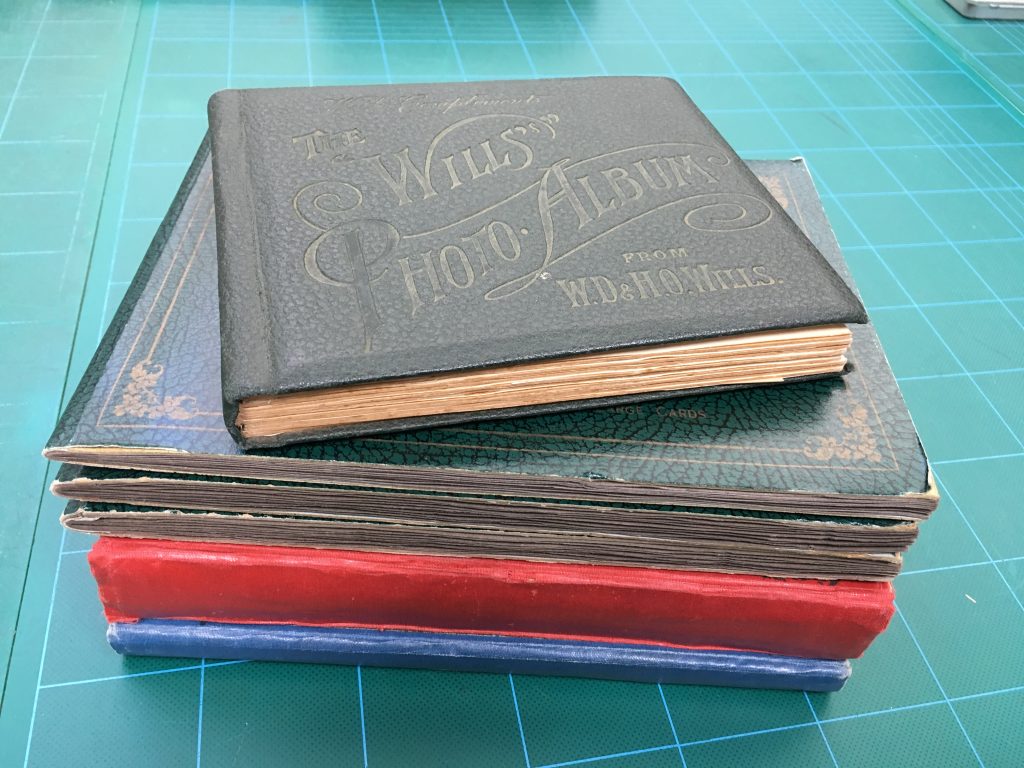
Preservation of the Library’s Collection of cigarette cards and boxes
The Library holds a significant Collection of cigarette cards and boxes, donated by Australian artist Eric Thake (1904-1982) in 1970 on behalf of his friend and collector, Douglas Moule.
The collection includes numerous complete and incomplete sets of cigarette cards dating from early to mid-twentieth century, many in mint condition. It comprises 2193 loose cards, 6 albums and 37 original storage boxes, including cigarette packets and various metal, cardboard and timber boxes.
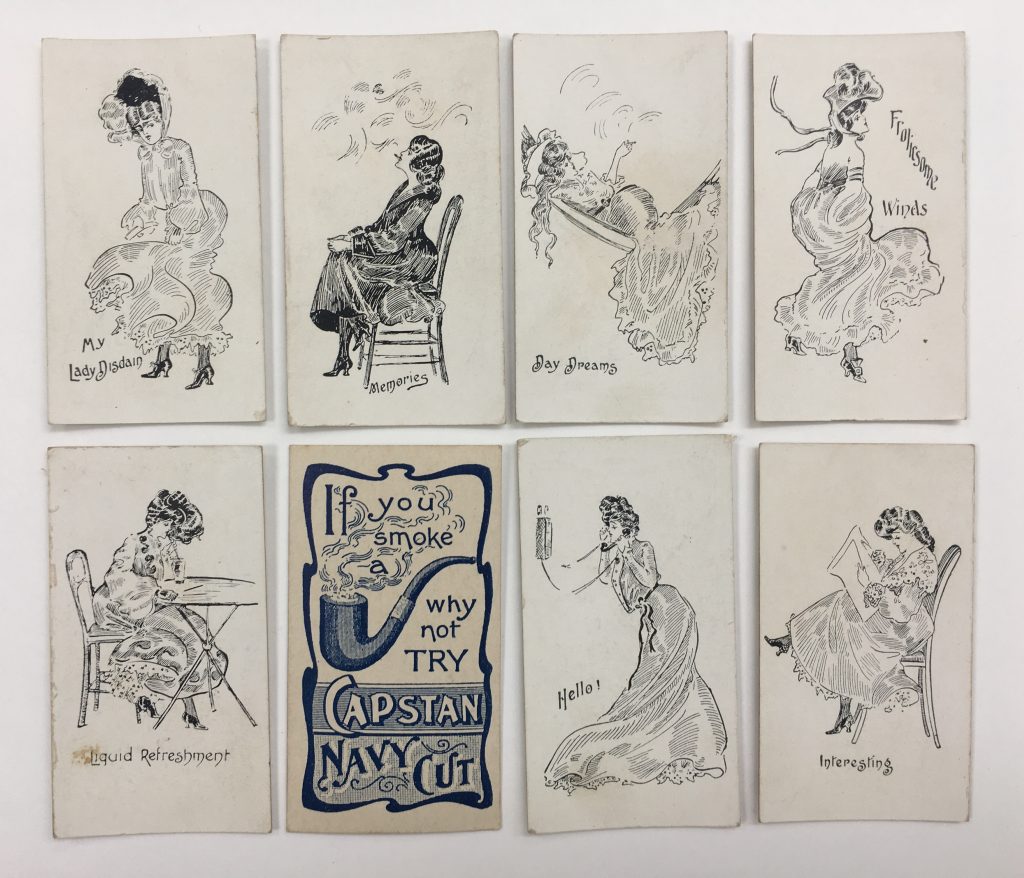
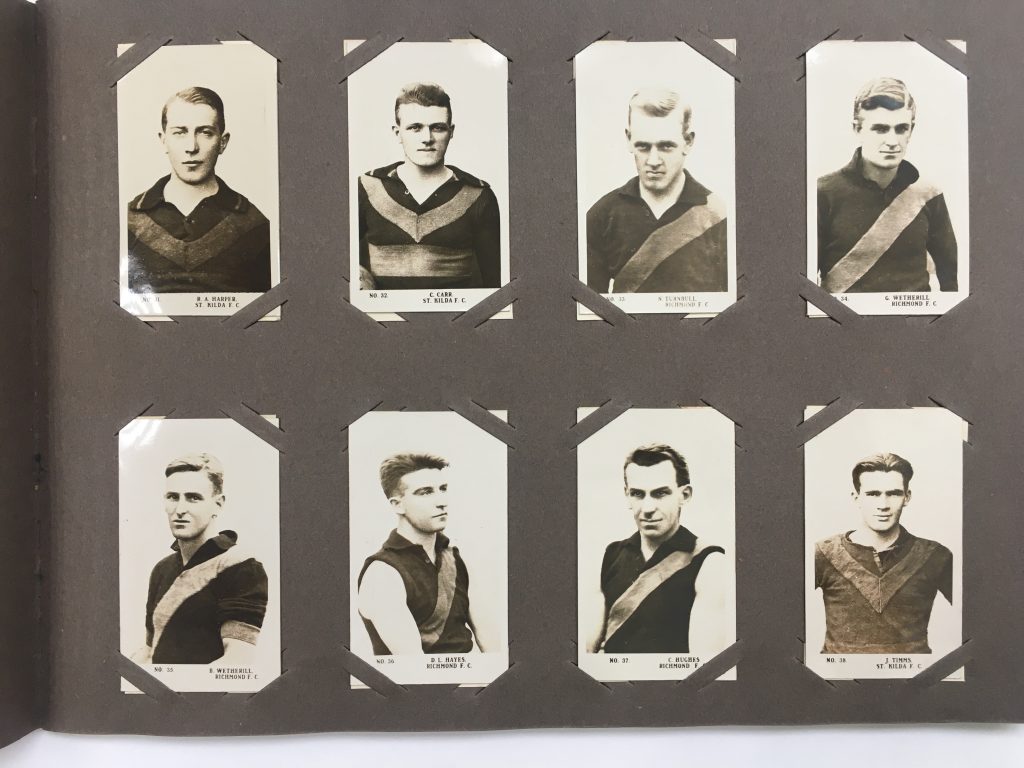
A wide range of subjects are covered, including Australian football, the First World War, cricket, animals, birds, flowers, celebrities, gardening, military, ships, hot air balloons and many, many more. The majority of the cards are printed reproductions of illustrations, however there are also sets of gelatin silver photographs and some really lovely examples of printed silk sets.
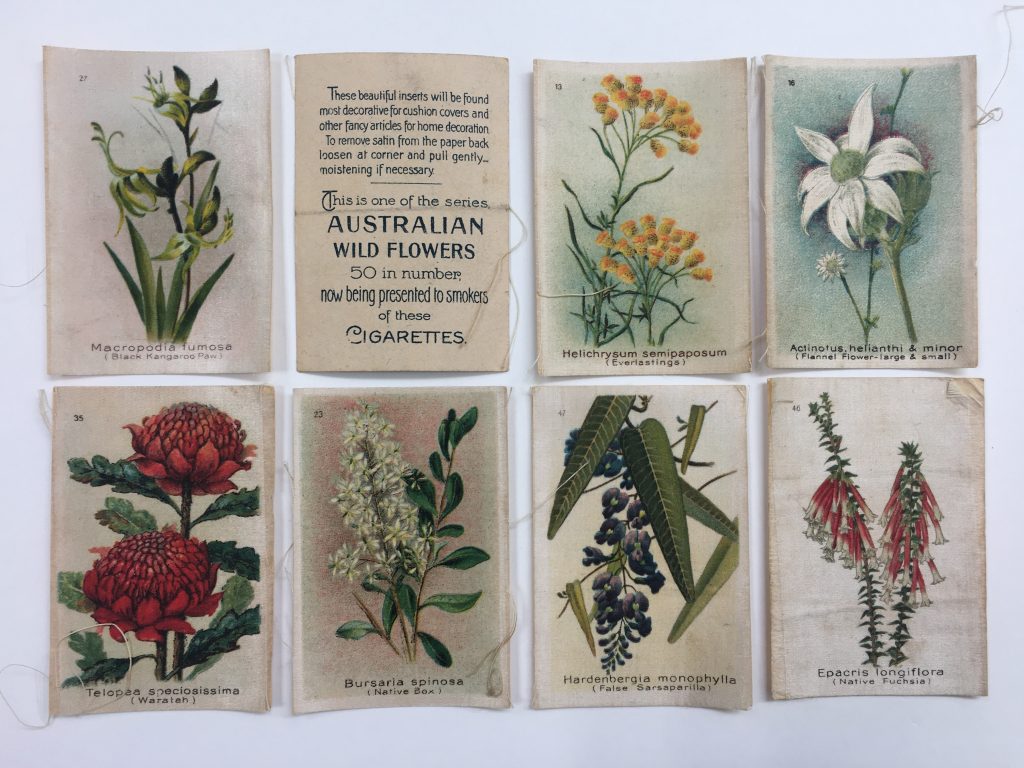
These miniature textiles, often incorrectly described as satin, were highly sought after, but also incredibly fragile. Australian silk issues were commonly reinforced with a card backing, which carried the manufacturers details, but in many instances these have been damaged or lost and it is rare to find the complete article.
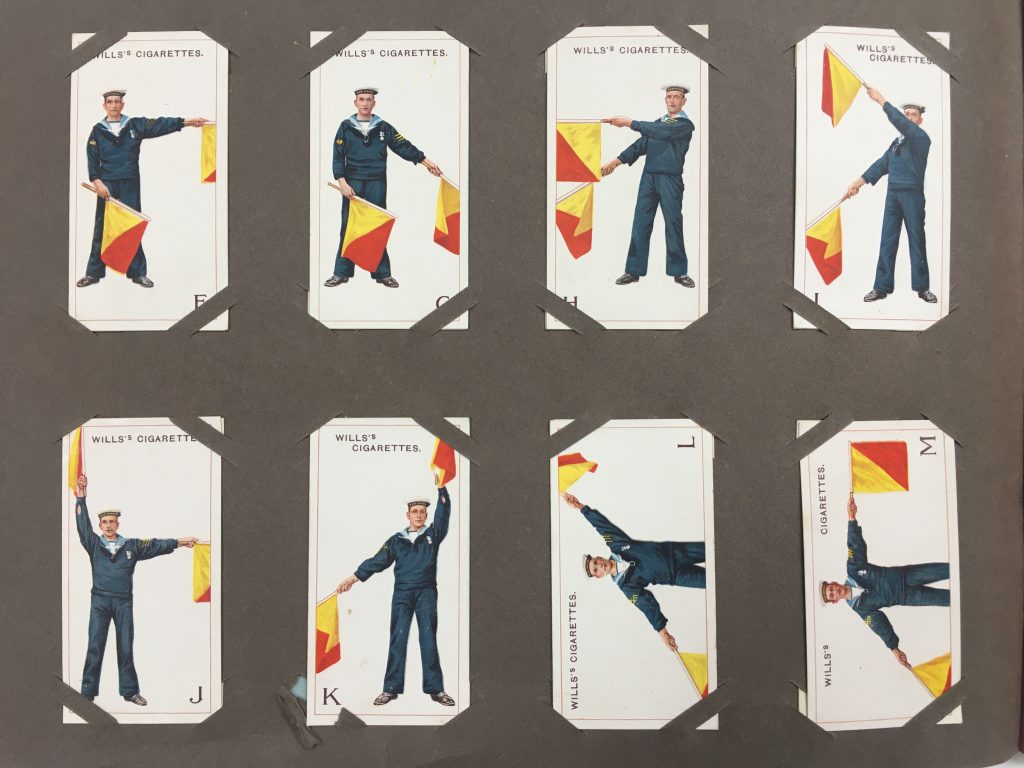
Our Preservation team was recently tasked with rehousing this collection to improve access and to ensure this small, but unique collection is protected for the long term.
While the original boxes and cigarette packets used to store the items had a certain charm about them, they impeded access and increased the risk of damage through handling. The cards were removed for sorting prior to rehousing and the original boxes retained for their historical significance.
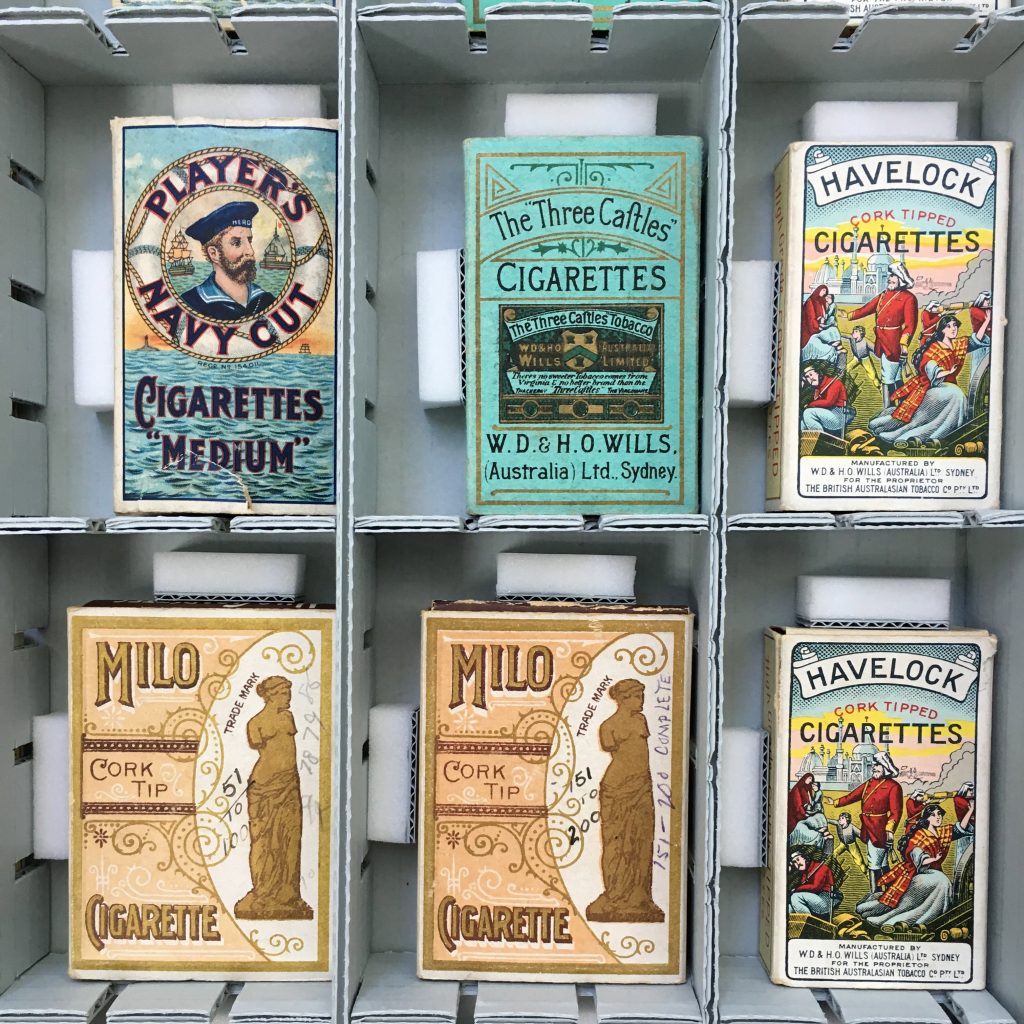
Sets were generally grouped together in their original packets, boxes and tins, however there were also a number of unsorted cards. Dion H. Skinner’s ‘Cigarette cards Australian issues and values’ (1983) proved an invaluable reference for the identification the various cards, even if the values were a little out of date!
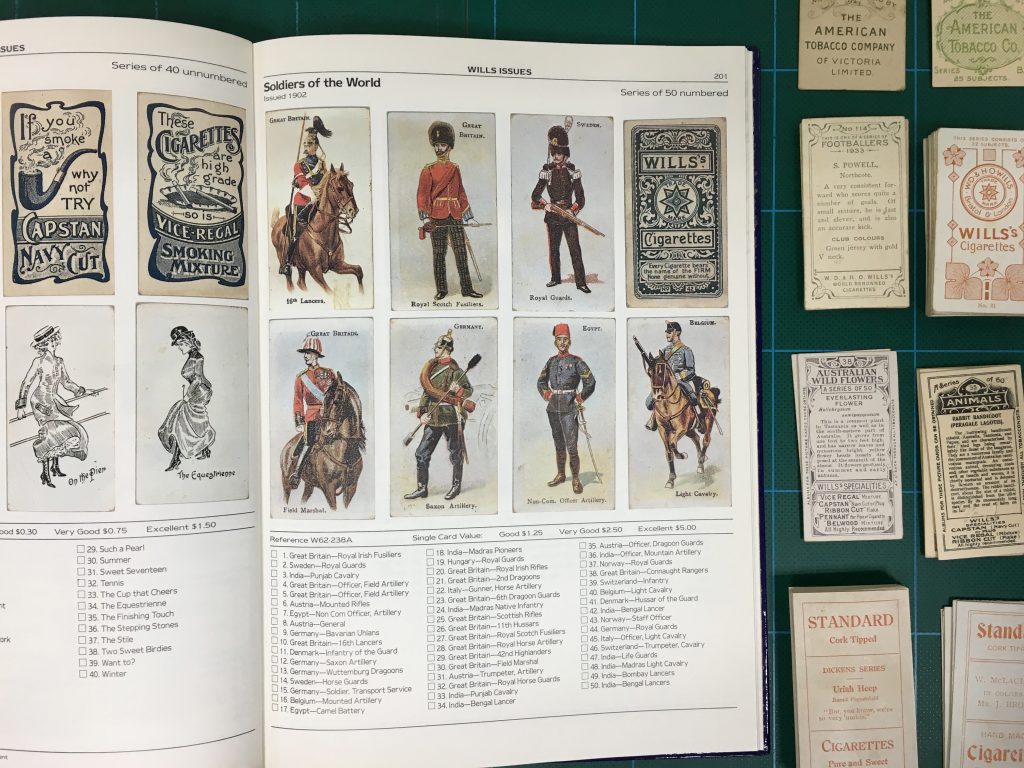
Loose cards were housed in archival plastic sleeves and albums, allowing both sides to be viewed without direct handling. Special issue albums were housed individually in archival phase boxes and the original cigarette packets, boxes and tins were snugly tucked away in custom boxes for ease of viewing without handling.

If you are interested in exploring this wonderful collection, find more information in the catalogue record.
References
Australian Cartophilic Society Inc. 2014, ‘The Cigarette Card’, accessed 1/06/2020, http://australiancartophilic.org.au/about-us/cigarette-card/
Skinner, DH 1983, ‘Cigarette cards: Australian issues and values’, Rennicks books, Malvern, South Australia.
Whiting, S 2020, ‘What is it that we collect?’ Card World, The Cartophilic Society of Great Britain Ltd., accessed 1/06/2020, https://www.card-world.co.uk/collect/
More to explore


Hello Leah,
I live in WA and my father used to collect cigarette cards when he was a young man in England. He has full sets as well as loose ones. There are approximately 3000 in sets in 2 albums plus a tin of loose ones that are not in sets. He is no longer with us. I have been given the task of finding out how much they might be worth and where do we find a buyer who is a genuine keen collector? I do hope you can help me. Looking forward to your reply.
Kind regards
Diane Miles
Hello Diane,
State Library Victoria is not able to provide advice on how much your collection might be worth. You may want to consult an expert, such as an auction house in your local area to advise you. We do have some information available on our website https://guides.slv.vic.gov.au/artists/auctions. Another helpful resource is the Commonwealth Government’s list of approved valuers https://www.arts.gov.au/documents/list-approved-valuers-cultural-gifts-program. You may also find that your local or state library in WA have resources available that you can access.
Kind Regards,
Leah
I also have found quite a few silk!?cigarette cards sadly only a couple have backs ,also brookebond tea cards they must be at least 70 years old as they were my fathers & I’m now 81 ,I wonder if they have any value ?
Hi Brenda,
Wonderful that you have these. You may want to consult an expert, such as an auction house in your local area to advise you. We do have some information available on our website https://guides.slv.vic.gov.au/artists/auctions. Another helpful resource is the Commonwealth Government’s list of approved valuers https://www.arts.gov.au/documents/list-approved-valuers-cultural-gifts-program.
Best wishes,
Leah